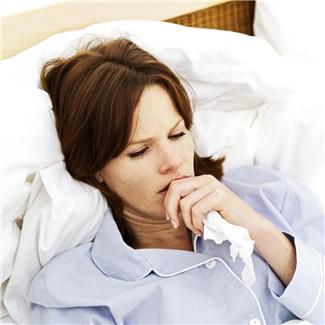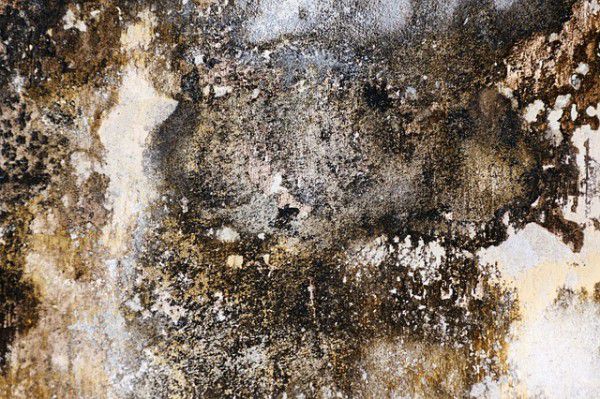Although mold can be found in almost any environment, there are certain types and quantities that can put your health at risk. Mold is a fungi that thrives off warmth and moisture, quickly reproducing by sending spores that travel through the air until they find a surface where they can grow. There are thousands of different types of mold but only a few types that are commonly found indoors; some of these being especially toxic to many people. If you have signs of mold exposure, it is important to seek medical attention and have the mold removed from your environment.
Different Types Of Indoor Molds
Mold can live almost anywhere there is warmth and moisture, making homes a perfect place for them to thrive. Bathrooms, kitchens, windows, attics and basements are all common places to find mold in homes. Most homes will have some level of mold, especially some of the most common types. These include:
Cladosporium. There are over 30 species of Cladosporium, often found on food in green or black mold.
Penicillium. There are about 223 recognized species of Penicillium molds. Some of these are known to cause health problems.
Aspergillus. Aspergillus contains about 185 species and is almost indistinguishable from Penicillium unless under a microscope. Certain species can also cause allergic reactions and health problems in humans.
Stachybotrys. Known as the “black mold,” Stachybotrys can cause health problems. This mold is known to produce the mycotoxin, satratoxin, which has been speculated to be toxic to humans.
According to the Center for Disease Control, any mold can cause an allergic reaction and health issues, so any mold infestation should be taken seriously.
Symptoms Of Mold Exposure
The most common problems associated with mold are allergic reactions and respiratory problems. While not everyone is allergic to molds, certain molds may cause health problems in anyone who is exposed to it in large quantities. In most severe health cases, there will be a significant amount of mold in a building, even if it is not readily visible. Some of the symptoms that people may have from mold exposure include:
Allergy symptoms. Sneezing, watering eyes, coughing and wheezing are all common allergic reactions to molds.
Asthma attacks. Molds can bring on asthma attacks in those who have asthma or are allergic to mold.
Respiratory infections. Lung and respiratory infections have been linked to mold exposure in some individuals.
Fever. Those with severe mold reactions may have a fever.
Rash. Many types of mold, including Stachybotrys, can cause a rash and itching of the skin.
Breathing problems. Severe reactions to mold can cause the victim to have problems breathing.

Anyone who believes they have been exposed to molds and are displaying ill health symptoms should see their doctor. In addition to receiving medical treatment, they will also need to ensure that the mold causing the health problems is removed from their home or work environment.
Removing Mold From Your Home
The only way to make your home safe once you begin to have health signs that you have been exposed to mold is to have it removed. This is not as simple as it sounds. Mold can grow in areas that are hard to clean or reach, such as in insulation, attics, walls and other surfaces throughout the home. In most cases, you will need a professional mold removal company to clear the mold from your home. They will be able to clean the mold, test to ensure all the mold spores are removed and have recommendations on how to prevent mold infestation in the future.
Mickey Schrader is the owner of Environmental Protective Solutions with locations in Nashville, Tennessee and Tampa Bay, Florida. If you have mold in your home or business, contact us today. You can find us on Facebook and Twitter too!


4 comments
I was exposed to mold at my work.There were ceiling tiles staked on top of each other and when they took them down they just crumbled. I have common variable immune deficiency and the exposure made me really sick.I want to know what I can safely do to get the mold toxins out of my system .I am also allergic to mold.
Hi.
Just a little information. One must remove themselves from the home or building that has toxic molds. Also you must just walk away leaving all possessions and clothes too. You must start from scratch.
It is one of the worst illnesses due to having to do all of that plus the treatment is horrible and costly. It can lead to financial ruin.
So i have a question. I just moved to arizona a little over a month ago. Before i moved here i felt none of these symptoms. Headache deep behind eyes and in back of head, burning in throat and mouth, sore throat, little bumps with hard centers that welt up, vision issues, craeling under my scalp, chest pressure/pain, shortness of breath, abdomknal pain, rapid hair loss, runny nose, pain in legs deeply, itchy skin, depression anxiety, can this be from exposure to penicillin and aspergillus Every Witch Way tested in my apartment complex and found indeed water chiller system at ten thousand times
I am disabled &have lived n my rental trailer 13 years. My friend was cleaning under kitchen sink/counter areas & my walls below are colored black, green,white, & look like they are stained from wetness.
I found small amount of mold many 4yrs.ago & my landlord said bleach would kill it. Well apparently not. Also found paper has laying on bottom that looked with burnt or eaten way. Didn’t know if mold does this to paper or not. Not sure what types mold I have, but I think its affecting me from reading info provided by you. I already have Multiple Sclerosis & I consistently have nasal problems, chronic bronchitis, mild COPD. Just this week a rash on top of both feet & legs is there not knowing why. I previously had allergy test 5 years ago & was told allergic to all but feathers. I also suffer from Celiac Disease & Lactose intolerance & IBM /Gastritis. Do you believe some o these things are due to all the mold my friend found, and living in it